Leaving my comfort zone
In this hobby, we spend a lot of time considering how to take our systems to the next level. My latest pursuit in analog improvements focused on a new phono cartridge. So I started a list in my head and narrowed down the candidates.
Almost as a reflex, I began searching for a moving coil cartridge. But then I caught myself in time and thought, maybe there is something different.
What the heck. Why don’t I step out of my comfort zone and see what happens? The last time, I stepped into the wonderful DS Audio Optical cartridge. Read my review of it. I was quite taken with the quality of reproduction of the DS Audio. So much so, that it joined my Benz LP-S to reside as the top two music makers in my system. DS Audio Optical cartridge got me pondering about something other than a moving coil cartridge.
Wait a minute Ken… are you saying you are going to try something other than a moving coil cartridge to compete, to dare to join, your top shelf vinyl tracers!!?? I can hear the collective voice of the moving coil crowd out there saying in unison… “good luck with that!”
Who would you pick
I bet if I asked a group of vinyl enthusiasts to name the top three cartridges, they would like to own, Grado Labs would not make a frequent appearance on these lists.
While well respected for offering excellent value cartridges, Grado suffers from not being a member of the moving coil club. It seems, however unjustly, that they are long-time members of the Rodney Dangerfield Audio Club. They get no respect.
Grado Labs could easily make a moving coil cartridge. After all, Joe Grado invented the moving coil cartridge in 1959 and holds the patent. Despite that fact, Grado Labs uses another design they feel is superior to moving coil, Grado’s patented Flux-Bridger generator.
In their mind, they have found a design they feel is better than moving coil. The Flux Bridger design is similar to moving iron or induced magnet designs. A fixed magnet and a fixed coil with a smaller, lighter piece of iron or similar material mounted on the cantilever will interrupt the magnetic field between the magnet and the coil. According to Grado, this design “creates a superior balance throughout the full frequency spectrum with superb resolution and clarity, which produces an overall truer picture of the music.
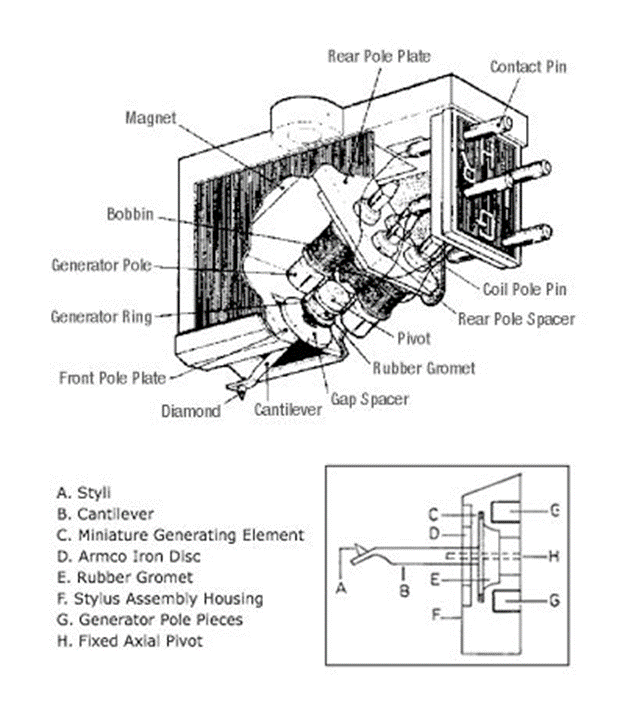
The Flux Bridger design offers several advantages over moving coil designs. It uses a lower effective mass of the generator. Also, more stable suspension and a more reliable electrical system since there are no coil wires connected to the cantilever that can potentially break. How many of you out there have lost a channel in a moving coil cartridge?
We all know that different designs have their own advantages and disadvantages. What I simply want to get across to you is that the moving coil design may not be the end-all design that it has come to be thought of. Perhaps that is a subject that can be elaborated on in a future review.
I contacted Grado Labs Sales Director John Chen and asked for a review sample of their offering in the 3-4k range being that I have reviewed the Hana Umami Red and the DS Audio EA1 which reside in a similar price range. I have come to think that this 2k to 4k range is the sweet spot in cartridges where you can get 99% of the performance available. Ascending the monetary ladder from this point will only end up being a study in the law of diminishing returns. And what you will pay for that last percent can be quite painful.
John sent me the new Grado Statement 3 cartridge which is the entry point to Grado’s top-of-the-line Lineage series. Above it resides the Aeon 3 at $6k and the top-of-the-line Epoch 3 at $12k. The Statement 3 replaces the highly lauded Statement 2, but the price remains at $3500.
So the improved version is the same price?! Now that’s something you don’t see very often nowadays.
The Grado Labs Statement 3
Being the last of the three cartridges to be designed in the Lineage series, the Statement 3 benefits from lessons and techniques learned in the earlier research and production of Grado’s top-of-the-line Epoch 3 and Aeon 3 cartridges.
I asked John to describe some of the new design features in the Statement 3. He told me they used an improved process of making the coils and reducing the interference between them. John says the results are a “purer signal where the harmonics are more clearly reproduced, and the motor is very quiet. Quiet is good for all kinds of reasons; definition of space is the most apparent.”
The Grado website elaborates a bit further.
“Combining newly developed coil winding techniques with decades-old disciplines, the four reconfigured coils find exact unison to create a precise balance between channels and true stereo imaging. A new four-step shielding process allows the isolation of the wire turns in the coils and creates an unrivaled clear path for the signal to travel.” (source)
The Statement 3 cartridge uses a cured Jarrah wood housing for the cartridge body and employs a boron cantilever with a nude .02 x .07 mil elliptical diamond. The generator system uses six nines OFC super annealed copper wire for the coils and Alnico magnets. Grado says that the Statement 3 cartridge “features a unique generating system that has the lowest effective moving mass of any cartridge.” The suggested break-in time is 50 hours and a cartridge load of 47K is specified along with a tracking force range of 1.6 to 1.8 grams and to pair with a phono stage that has at least 56dB gain. Output is 1mV.
Grado rates the life expectancy of the diamond at 2000 hours pointing out that the use of a record cleaning machine greatly extends the life of the diamond by reducing the dust and dirt that acts like sandpaper and dulls the diamond over time. They highly suggest a record cleaner be on your list of accessories.
When asked about their preferred stylus cleaning method they recommend dry cleaning of the stylus with minimal use of stylus fluid.
Is it in the details
I have previously written about the industry/reviewing trend of focusing on extracting detail as an end game. This has been, IMHO, one of the driving forces in the popularity of moving coil cartridges as they seem to focus on the sound from the top down. If your priority is to hear music like you are sitting at the mixing board with headphones on and trying to decide how much spittle the singer is producing, then moving coil cartridges might be your pick.
But my preference is sitting on Row F, listening to the artistry and flow of the musicians, and having it wash over me emotionally.
Both are valid ways to listen, but I thought it was important you know what my preferences are as I talk about this cartridge. Don’t misinterpret my comments, I am all for the revelation of information on an album but not at the expense of the music being able to communicate with me emotionally. Many times I find that when detail is prioritized in the sound, listening becomes tedious and I lose interest in the music.
If you have a similar preference to mine, the good news is, I think we are finally starting to see the pendulum swing back to music, as a whole. The priority and building the sound from the midrange out and not from the top down. Not only in cartridges but in other areas like speakers. Do we really need another diamond or beryllium tweeter?
But like turning the Titanic, this will be a slow process as many reviewers and manufacturers are quite invested in the detail game.
Set up info
For this review, I will be using two different turntables to put the Statement 3 through its paces.
My AMG Viella 12JT Turbo and the Holbo MkII linear tracking air-bearing turntable (review coming). With its weight of 10 grams and compliance of 20um, the Statement 3 worked very well in both arms. I used the Grado recommended Stevenson Alignment on the AMG turntable.
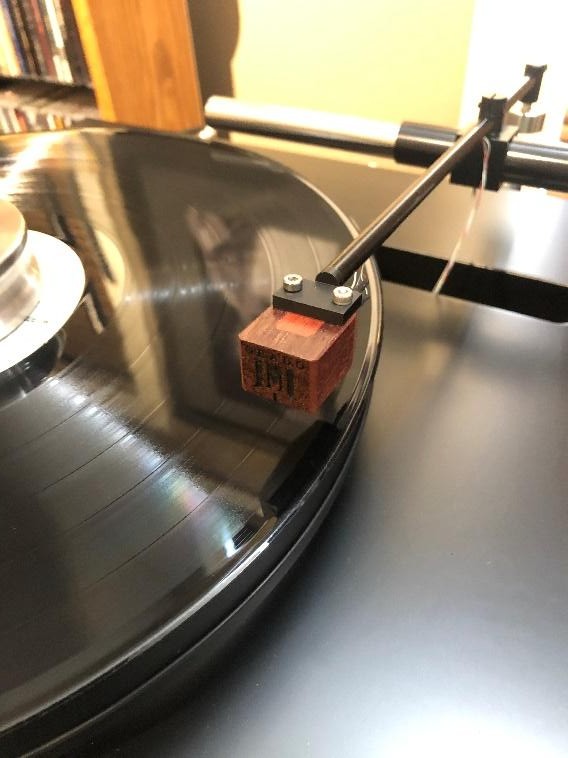
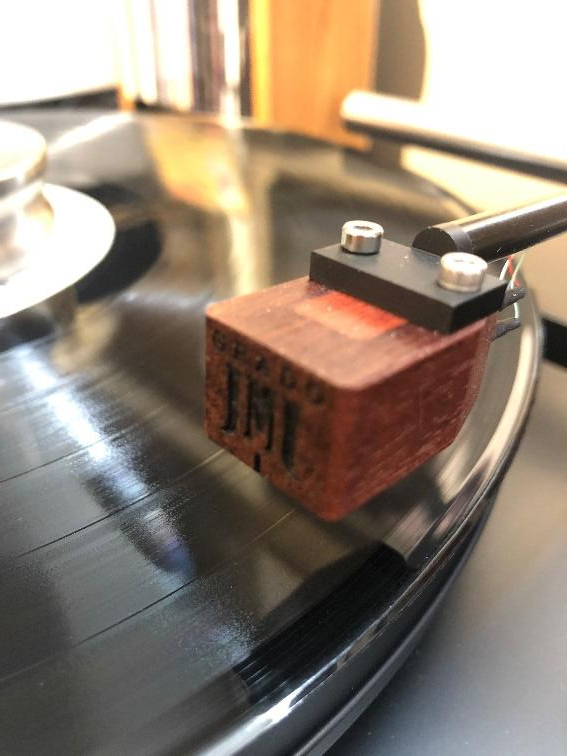
I tried all 3 of my phono stages. The Parasound JC3+, an upgraded Mod Squad Phono Drive, and the PS Audio Stellar Phono. The clear winner was the Mod Squad Phono Drive with its exceptional dynamic expression and ability to let the Grado “stretch its legs” and strut its stuff. It was used for the duration of the review.
The signal then moves on to my Benchmark LA4 preamp and AHB-1 monoblocks or Quicksilver MS190 amp. The speakers were my Acoustic Zen Crescendo II and Pure Audio Project Trio 15 Coax 10 (review coming). Audience Front Row and Triode Wire Labs cabling reside in my reference system.
One interesting note: With its 1mv output and 47k loading, the Grado seemed like a likely candidate to use the MM input of my three phono stages. However, in the case of all three units, using the MC input set to 47k proved to be the most engaging sound.
I ended up with a VTF of 1.75 grams in both arms, which is the upper part of Grado’s recommended tracking range of 1.6 to 1.8 grams. The adjustability of the AMG 12JT Turbo arm let me easily and repeatably try different VTA and azimuth adjustments. My preferred VTA was between perfectly level and 1mm down in the rear, which seemed to be the best balance of speed and weight in the sound. Azimuth, adjusted by both Fozgometer and by ear, ended up being a “spot-on” level.
Stylus guard needs work
Regular readers of my reviews know that I am quite critical of cartridge stylus guard designs. Some manufacturers seem to give guards some thought while for others it just seems like an afterthought. While it seems like a small thing, I focus on this because cartridges nowadays can be a considerable investment and accidental damage is a real possibility. A well-designed stylus guard that is easy to use is very important and can save you thousands of dollars. It makes no sense to have a stylus guard that, by using it, increases the chance of damage. I recently gave the Hana Umami Red and the DS Audio EA1 high marks for their stylus guard designs. At the other extreme is my Micro Benz LP-S MR which doesn’t even come with a stylus guard.
Sadly, I must report that the Grado Statement 3 stylus guard comes up short in this category, with a very poor design.
It requires you to line up two pins on the guard that insert into two holes in the bottom of the cartridge that holds the guard on. Not the easiest thing to align. I have been handling cartridges for decades and this design makes me quite nervous when I use it. Grado would do well to seriously rethink the design of their stylus guard.
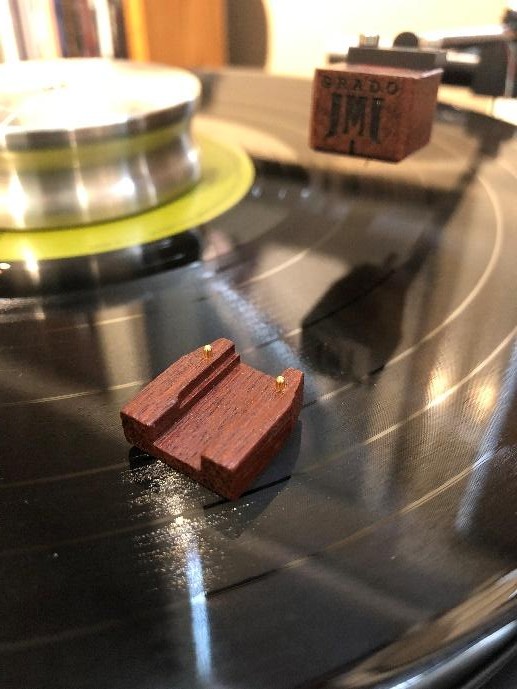
The sound
What do you get when you apply almost 70 years of cartridge making and design knowledge to refine an already great-sounding cartridge further? In the case of the Grado Statement 3, you get it RIGHT! And you get it at a cost considerably less than the high-priced spread of moving coils.
Let me start by saying I have never had a cartridge “invite me” to listen to a larger cross-section of music than the Grado Statement 3. What I mean by that is that each album, no matter the genre or quality that I put on, was musically and artistically engaging in its own unique way. The Statement 3 has a vivid midrange with excellent timbral density and a large cohesive soundstage. I found myself pulling out album after album I have not heard in years.
This is a very neutral cartridge that does not inject its personality into the music but lets the character of each musician, instrument, and venue sound uniquely itself.
With some ultra-high-end cartridges, I find myself wanting to listen to only my best LPs, and generally, the cartridge is not as inviting to a lot of my “regular” music. I can tell you that I pulled out more varied music to listen to with this cartridge than I have with any other cartridge I have reviewed.
Another recognizable characteristic of this cartridge is its feeling of “oneness” and completeness of the venue and music. The midrange has that “you are there” feel that issues you an “invitation to listen.” Speaking of midrange, I have never had an easier time understanding the lyrics of a song than with the Statement 3. It has vanishingly low distortion with extended highs, and the bass quality, attack, and definition are some of the best I have had in my system. It recreates a density to the music that simply sounds more like the real thing to me.
Another endearing quality of this cartridge is its ability to disassociate the groove noise from the music. If an album has groove noise, you still hear it, but you can more easily listen through it. I have experienced this with a few other cartridges, and I consider it an important quality for a cartridge to possess.
At this point, you are probably asking, okay, Ken; I get it; you like this cartridge, but what doesn’t it do?
While it ticks all my boxes for being a great cartridge, I could see where it would perhaps fall a hair short for those out there that are looking for an “audio microscope.” Then again, it might also change their mind once they hear it.
LP Examples
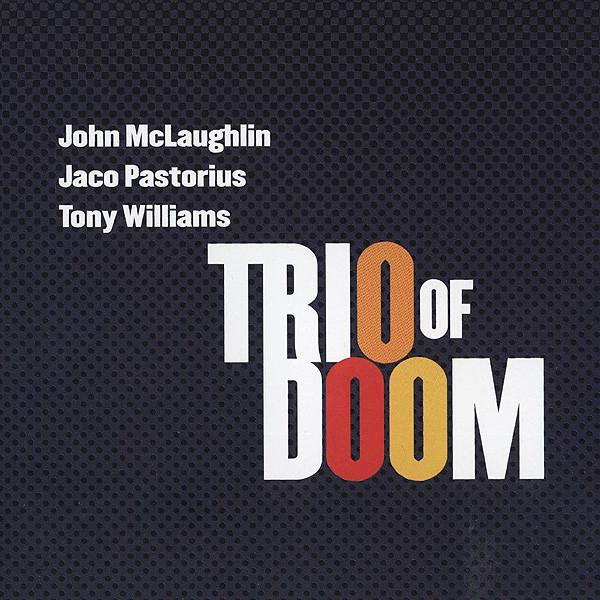

Trio of Doom featuring John McLaughlin, Jaco Pastorius, and Tony Williams is one of the albums I use as a tracking torture test.
The insane opening Drum Improvision by Tony Williams that runs into John McLaughlin’s Dark Prince is a challenging stretch for a cartridge to track correctly and maintain its composure. The Statement 3 didn’t even break a sweat. Its transient speed and dynamic impact were outstanding, and it played both cuts effortlessly with no “hardening” of the sound as the complexity of the music increased.
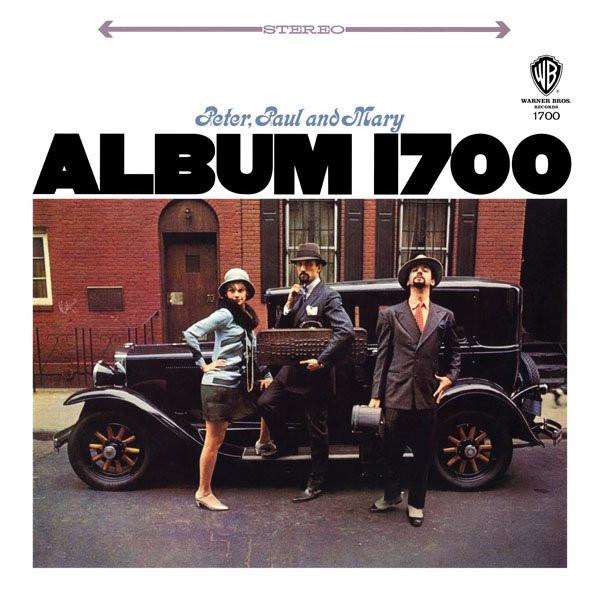
Album 1700 by Peter Paul and Mary played with the Statement 3 was an absolute pleasure to listen to. The harmonies, tone of the vocals, and instruments quickly had me sitting down to listen to the entire album. And this happened again and again with the Statement 3. I would put an album on to listen to a known song and I would end up being drawn into listening to the entire album.
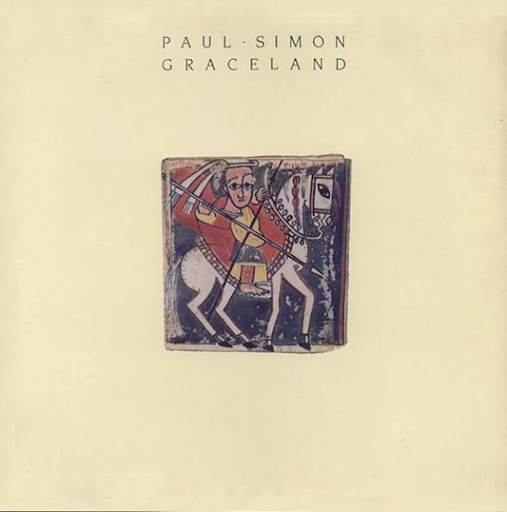
“I Dig Rock and Roll Music” not only had great pace, rhythm, and timing but you could also sense the sarcasm infused in the song lyrics about “rock and roll music” and that the group was having fun singing it. It is a hard thing to explain, but it is easy to hear…. with the Statement 3.
After listening to the entire Graceland album, I felt like I had been through a 15 round boxing match. It is a rollercoaster ride. I dropped the stylus on You Can Call Me Al and was treated to excellent instrument separation and deep, fast, clean bass definition. The cartridge also handled the micro and macro dynamics splendidly. Paul Simon’s voice had a rich tone and body. I use this album frequently for evaluations because of its wide variety of music and overall, this was the best I have had it sound in my system.

While my first pressing of the Al Schmidt produced After Bathing at Baxter’s by The Jefferson Airplane will never be mistaken for an audiophile album, it is a good example of an album I enjoyed listening to with the Statement 3 in the groove. I have been run out of the room playing this vinyl with several high-end moving coil trackers but with the Statement 3, I simply sat in my seat and listened to and enjoyed the experimental psychedelic rock offered up by Paul Kanter and Grace Slick that I almost remember listening to in the late ’60s on my AR 3a’s.
Conclusion
I predict Grado Labs’ membership in the Rodney Dangerfield Audio Club will soon be revoked as it will begin to get the recognition it deserves. I feel confident you will see The Lineage Series being mentioned in the same sentence as other top-tier cartridges
In summary, I will simply paraphrase Charlton Heston…. You are going “to have to pry this cartridge from my cold, dead hands” because the Grado Statement 3 is not leaving my system.
I am glad I stepped out of my comfort zone again and I suspect if you step out of yours and audition the Statement 3, it may not leave your system either.
If you are looking at spending thousands on a new cartridge, do not overlook auditioning the Grado Statement 3. If you dismiss it because it is not a moving coil design, that will be your loss. This is simply one of the most enjoyable creators of music I have had the pleasure of experiencing in my system.
Kudos to the Grado development team!!
Enthusiastically recommended.
Here is a link to a Grado Labs history timeline that is quite interesting.
https://gradolabs.com/company/timeline
Price is 3500.00
The exchange price is $2350.00
Body: Australian Jarrah Wood
Cantilever: Boron / Elliptical Diamond
Output: 1.0mV @5 CMV (45)
Controlled Frequency Response: 5-65 kHz
Channel Separation: Average 35db – 10-30k Hz
Input Load: 10k-47k ohms
Inductance: 8mH
Resistance: 74 ohms
Pickup Weight: 10 grams
Tracking Force: 1.6-1.9 grams
Compliance: 20μm/mN
Non-Sensitive to Capacitive Load

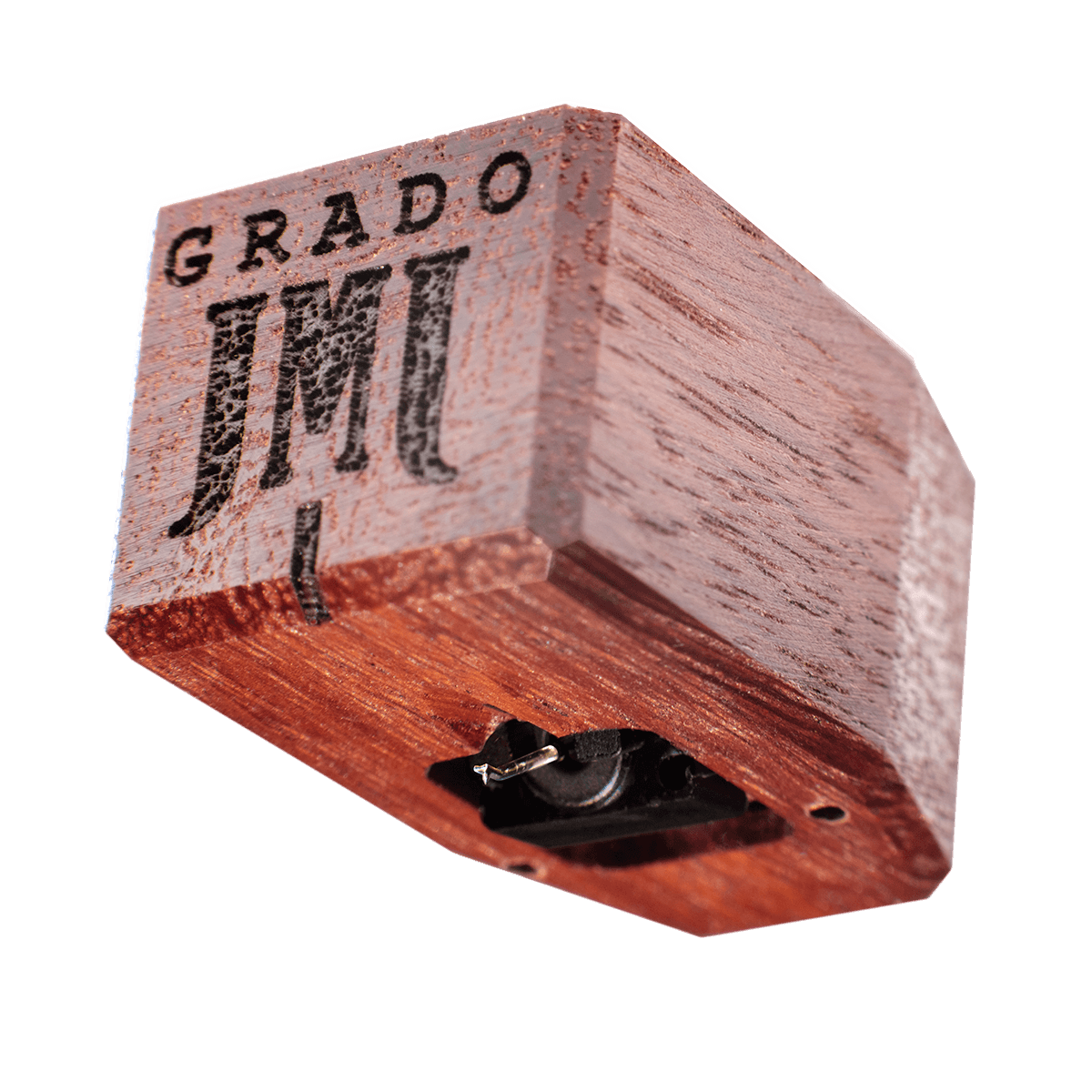
I’m a Decca moving iron fan. I recently had to send my London Reference off for its final rebuild (John Wright retires at the end of this month), so I looked at other MI designs. I bought a Nagaoka MP-500, a Soundsmith Sussurro MkII and a Grado Statement 3.
The MP-500 won instant approval for sounding most like the Decca. The Statement 3 and the Sussurro both sound best via the MC input, but I think you might experiment further with the resistive loading. My Statement 3 is clearly better with 100Ω, which tames the top end to the point where it sounds realistic. The Sussurro is best with 400Ω.
It’s been an expensive experiment. I have ended up buying a second SME turntable and two tonearm pods so I can use four tonearms to delay the awful day when my last Decca cartridge dies and cannot be rebuilt. Obviously, the Reference gets pride of place, and I was surprised to find that from my old cartridge cupboard, the Ortofon Kontrapunkt C deserves second place. The heats are in progress, but currently the Statement 3 gets a place on the third tonearm, and the last spot is being fought over by the MP-500 and the Sussurro. Fortunately, my phono stage can handle up to five cartridges and remembers all the settings for each (MF NuVista Vinyl).
Hi Christopher… Thanks for taking the time to share your experiences with those cartridges.
The sharing of knowledge/experiences helps us all move closer to our own personal Audio Nirvana.
Keep spinning those vinyl platters.
This was a great review. Thank you for taking the time. I just plunked down the money for the Grado Epoch 3 which I have been auditioning for the last few weeks. I also have a London Reference which just came back from John Wright in England getting its final retip and recalibration. I sold my former Ortofon MC Anna and plan to also add the Ortofon MC Diamond. My table, an Artisan Fidelity NGS SE can handle four arms and currently has a 4 Point 11” and 14” installed. I also have a Technics EPA 100 MK2 which is being rewired and rebuilt with lab grade sapphires. The Epoch 3 and the MC Anna Diamond are the two finest cartridges I’ve ever heard. The Epoch is the only cartridge I’ve ever thought sounded like my former crazy tricked out 15ips 1/4” reel to reel system.
The London is phenomenal with the right music, especially a drum kit, but it also excels at voices.
The Epoch 3 is the first Grado I’ve ever owned or heard for that matter. I just had a feeling about the device. I track at 1.854g while loaded at 47k ohms with 60dB of gain into my AMR PH77 phonostage and it is pure music. It literally puts the best digital player I’ve yet to hear (and I’ve heard a great number of them from wadax, DCS, Lampizator, MSB, Meitner
, etc) my AMR CD 77.1 with a double crown TDA 1541 chipset and some other magic to shame!
The Epoch 3 needs about 57 hours to start waking up at 70 it’s incredible. I have 88 hours on my StylusTimer. I’ve read 150 hours is full break-in time.